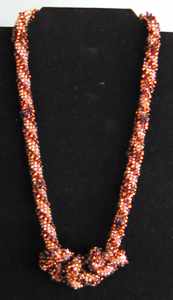We all make mistakes in our crochet from time to time.
No, NOT THIS KIND OF MISTAKE:

Rather, we fail to count correctly, get our gauge wrong, lose our way in a pattern – that sort of thing. Here are a few ideas to help you stay on the crochet straight and narrow (or wide and fluffy if that suits you).
Need to know how to calculate how much yarn you’ll need to complete a project? This site will help you:
http://www.thecrochetside.com/content/tips/project_yardage_calc.html
This site has a nice compendium of information about yarn weights and recommended hook sizes – and more:
http://www.craftdesigns4you.com/crochettips.htm
Here’s a LOT of information on crocheting with beads:

http://www.beadwrangler.com/tips-crochet.htm
Crochet Tip #54 on this site is INVALUABLE for those of us who are ‘counting challenged’. I’ve read that I’m not the only one with this problem. There are a couple other good tips at this site too:
http://crochet-mania-tips.blogspot.com/
Finally, here are a few tips from my own experience:
1. Hook sizes given in patterns are mere suggestions. Use the hook size that works with the yarn and gives you the size you want.
2. Gauge is often important, especially when crocheting garments, so swatching is irreplaceable. However, for flat items like afghans and doilies, gauge is necessary only if you might run out of yarn if you change to a much larger hook size or crochet out of gauge limits for any reason – like you tension.
3. Patterns are great starting points, especially for beginners, but are often mere suggestions. Don’t be afraid to experiment if you love the item pictured but don’t like one element, like the stitch selection. Change the stitch selection if you want. Pay attention to gauge in this case – absolutely necessary for a garment – so that you wind up with something that at least resembles the pattern.
4. Be daring. If your project fails, consider turning it into a motif rather than frogging it (unless the yarn is very expensive and you MUST use it for its originally intended purpose). Freeform crochet is another way to use ‘failed’ pieces. Google ‘freeform crochet’ to see how far you can go with a hook, some yarn, and your own mind.
5. If your wrist or hand is getting tired from hours of crochet, change the way you hold your hook – say from knife to pencil – for a few minutes. Gauge doesn’t change (in my experience) and, while it may feel awkward, it uses different muscles and allows your ‘regular’ crochet muscles to get a rest.
6. Don’t change hook sizes in the middle of a project. Ask my friend DJ about her narrowing plaid afghan. Nuf Said.
Now, go crochet something – and have fun!

Leave a Reply